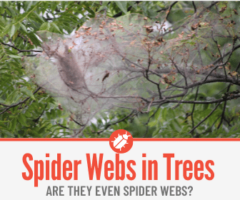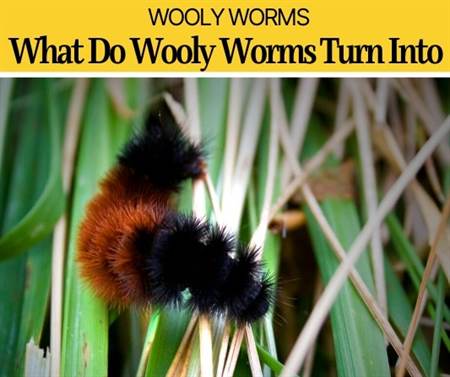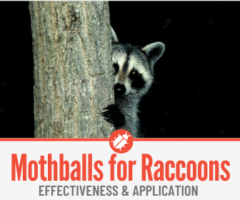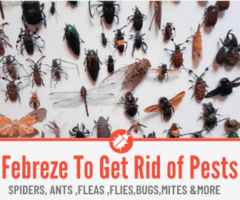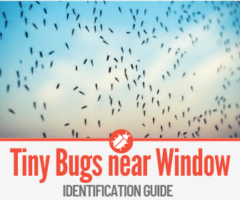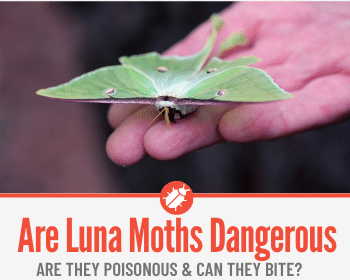 Revered for its beauty, the Luna moth (Actias luna) is truly an eye-catching critter. But Are Luna Moth’s Beuty Deceiving?
Revered for its beauty, the Luna moth (Actias luna) is truly an eye-catching critter. But Are Luna Moth’s Beuty Deceiving?
In this guide you will learn:
- If Luna Moths or Luna Moth Caterpillars are Poisonous to Humans or Pets,
- Can Luna Moths bite and Can they be Dangerous,
- Should you touch a Luna Moth,
- If Luna Moths are Pests or they are Helpful.
Luna Moths are of the largest moths in North America, with an impressive wingspan that can reach up to seven inches.
The Luna moth is found in North America’s deciduous woodlands during spring and early summer and is a rare but stunning sight appreciated by those lucky enough to spot one!
However, can they be dangerous? Can they cause destruction to your garden? How long does the Luna live, and how do you identify it in its different stages of metamorphosis? Keep reading to find out.
Are Luna Moths Poisonous?
Luna moths are not poisonous; they are entirely harmless. However, Luna moths might be mistaken as toxic due to their bright coloring and hairy bodies.
Most poisonous moths do, in fact, have visible hairs, just like the Luna moth.
The spiny hairs of poisonous moths can get lodged in human skin, causing skin irritation, patches of red bumps, and allergic reactions.
However, the hairs on the Luna moth are not spiny enough to penetrate human skin, and their hairs do not transmit any toxins.
Thus, Luna moths do not cause any adverse reactions in humans.
Bright colorings in wildlife work as a warning signal to predators that the animal is poisonous.
But for the Luna moth, the bright, green color simply provides camouflage allowing it to blend in and hide among leaves.
Chinese Luna months
What about the Chinese Luna months? Are Chinese Luna moths poisonous? Chinese Luna (Actias dubernardi) moths are found in parts of China. Like its North American counterpart, Chinese Luna moths are not toxic as well and don’t pose any danger to your health.
Can Luna Moths Be Dangerous to you?
Luna moths are not dangerous to humans. They cannot sting, transmit any toxins or make you sick.
While it is safe to touch a Luna moth, you should still avoid it. Luna moths have scales on their wings that fall off when touched.
If they lose a significant amount of scales, they can become less aerodynamic, affecting their flight.
Do Luna moths bite?
Luna moths do not bite; the adult Luna moth does not have a mouth or a digestive system.
Their mouths become atrophied once the caterpillar matures into a moth and it loses all its teeth.
So how do they eat? They don’t!
Luna caterpillars store fat, and it is on this stored fat Luna moths survive on once they leave their cocoon.
Are Luna moths Poisonous to Pets?
If you see your four-legged friend eat a Luna moth, you do not have to worry. Just like Luna moths are not poisonous to humans, they are also not poisonous to pests.
However, pets might not find the Luna moth a particularly pleasant meal. Luna moths often regurgitate a rather distasteful fluid as a defense mechanism when it is threatened.
While foulsmelling and tasting, these fluids are not toxic and will not make your pet sick if ingested.
The fluids solely act as a repellant to make the Luna caterpillar seem like an unappetizing meal to predators.
Are Luna Caterpillars Poisonous?
We have covered that adult Luna moths are not dangerous to you or your pets, but what about Luna caterpillars?
Just as the adult Luna moth, Luna moth caterpillars are not poisonous as well!
Contrary to other fuzzy-bodied caterpillars, such as the puss caterpillar and the saddleback caterpillar, which have toxic hair, the Luna caterpillars’ hairs are not harmful and will not cause harm, stinging, or skin irritation.
Can you touch a Luna moth caterpillar?
Luna moth caterpillars are safe to touch; however, as with most wildlife, it is better to observe from a distance.
So, unless necessary, you should avoid touching a Luna moth caterpillar.
If you need to move a Luna caterpillar that is in harm’s way, or if one sticks to your clothing as you walk in shrubbery, you can carefully grab the caterpillar by the sides of its abdomen and gently put it in a safe place.
More than 50 caterpillar species in the United States cause a painful sting, so make sure you correctly identified the caterpillar before touching it.
Are Luna Moths Helpful Or Harmful?
The Luna caterpillar feeds on different species of broadleaf trees of certain nut and fruit-bearing trees and shrubs. However, the small population of Luna larvae prevents them from causing significant damage.
Moreover, since adult Luna moths do not have a mouth, they are not harmful to plants or property during their adult life either.
While Luna moths are not harmful, they are not particularly helpful either. Since Luna moths do not eat, they do not help to pollinate plants or contribute to the population control of unwanted critters. They do, however, serve as a food source to several animals.
Is it bad to kill a Luna moth?
Luna moths are harmless to humans, pets, vegetation, and property, rendering them unnecessary to kill.
Moreover, the Luna moth population is declining due to habitat destruction, parasitic predation, increased use of bright lights at night, pollution, and pesticides.
In some areas, the Luna moth is considered endangered, and it is recommended to avoid any population control efforts in those areas.
Remember, Luna moths live for a short week. So if you are lucky to see one, observe it from a respectful distance and let it enjoy its short life.
Are Luna moths a pest?
Luna moths are not pests; they are not harmful to humans or crops. However, if you do not like having Luna moths in your garden or around your property, you can use preventative measures that will keep them away without killing them.
These preventatives include spray deterrents that keep Luna moths from laying eggs in your garden, introducing natural predators, and minimizing outdoor lights at night.
The Life Cycle Of Luna Moths
The entire life cycle of Luna moths, from egg to adult moth, is about 11-12 weeks. A Luna moth spends about ten days as an egg, 6-7 weeks as a larva, 2-3 weeks as a pupa, and one week as an adult moth.
Once the Luna caterpillars emerge from the eggs, they are ravenously hungry and immediately start to feed. For the next 6-7 weeks, the Luna caterpillars eat, grow, and molt.
When the caterpillar reaches about 2.5 inches long, it will begin to spin a silken cocoon. The Luna moth wraps its cocoon in leaves to protect the vulnerable caterpillar as it starts the metamorphosis process and to provide camouflage.
Once it has matured within its cocoon, the adult eclosion occurs and finally emerges as a moth.
The adult moth emerges in the early morning with its wings wet and crumpled. Because of the condition of its wings, it cannot fly.
Instead, the Luna moth crawls to a tree where it rests all day while its wings dry and inflate with blood.
Once dry and extended, the Luna moth stretches out its wings and flies off into the night.
During the Luna moth’s short life as an adult, it has one essential purpose: find a mate and reproduce.
Once it achieves this mission, it will perish. And so, as one life cycle ends, another begins.
How To Identify Luna Moths
The Luna moth is commonly considered one of the most striking moths, mainly due to its bright coloring and shape. But it is not only the adult Luna moth that catches attention.
The Luna moth begins its life as a colorful larva; it is lime-green with yellow vertical lines extending across the dorsum and horizontal segments marked by yellow stripes.
Short white hair protrudes from the segments and sparsely covers the body.
While adult Luna moths are not rare, they are rarely seen because they are nocturnal creatures.
If you happen to come across one, you can easily recognize it by its bright, large, lime green wings.
The wings have long, tapering tails and discal eyespots on each fore and hind wing.
The eyespots are reminiscent of crescent moons, and the name Luna is derived from these moon-like markings.
The long tails and the eyespots work as natural defense mechanisms meant to confuse predators, especially bats.
When Luna moths fly, the tails twist and spin, which interferes with bats’ echolocation

